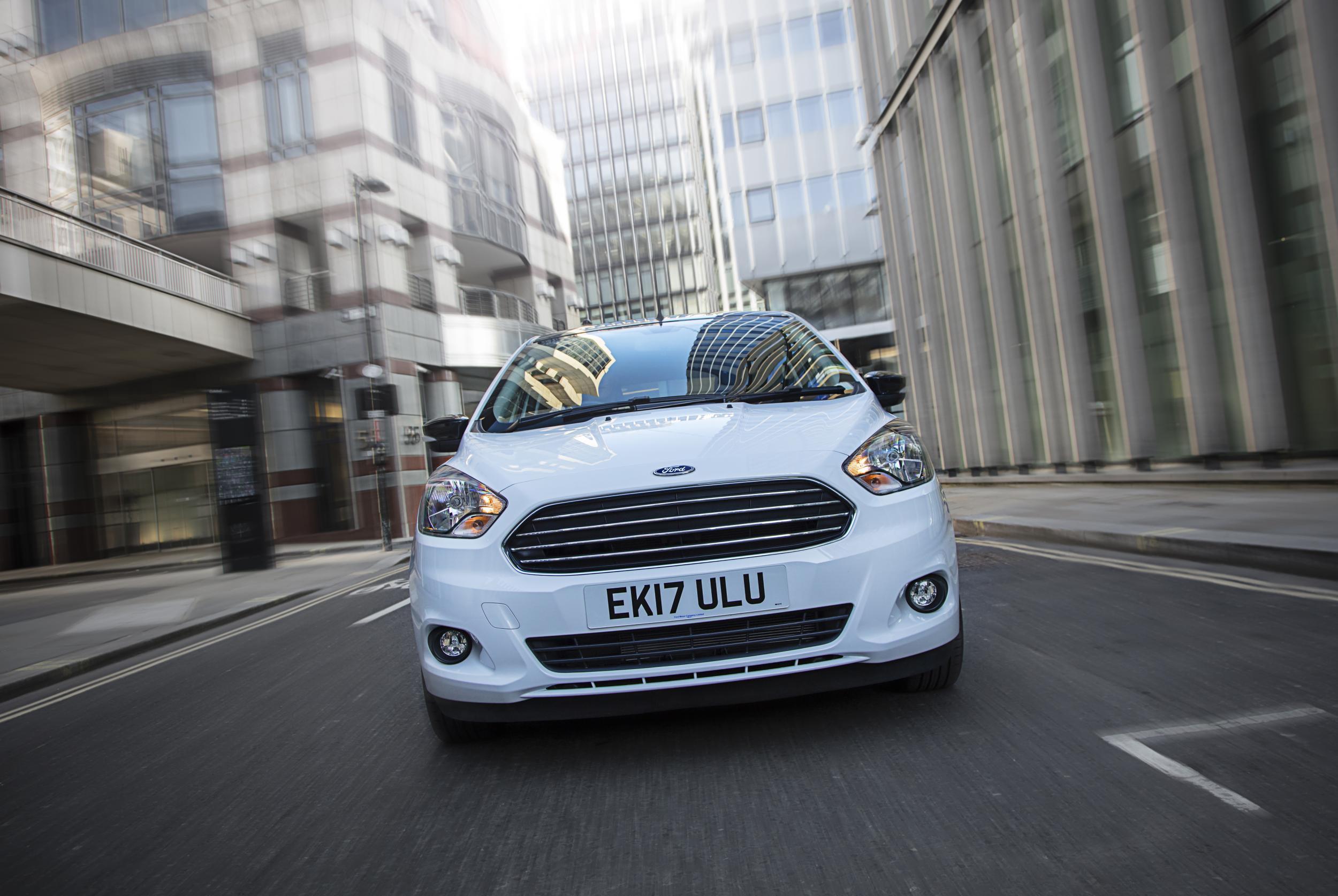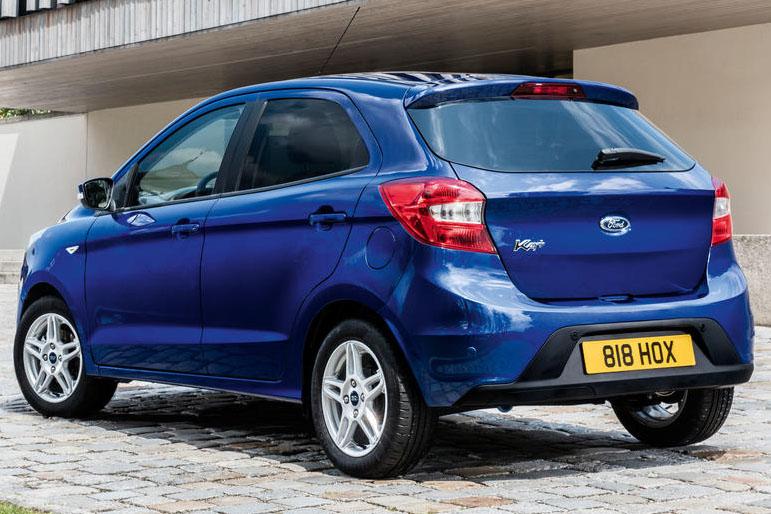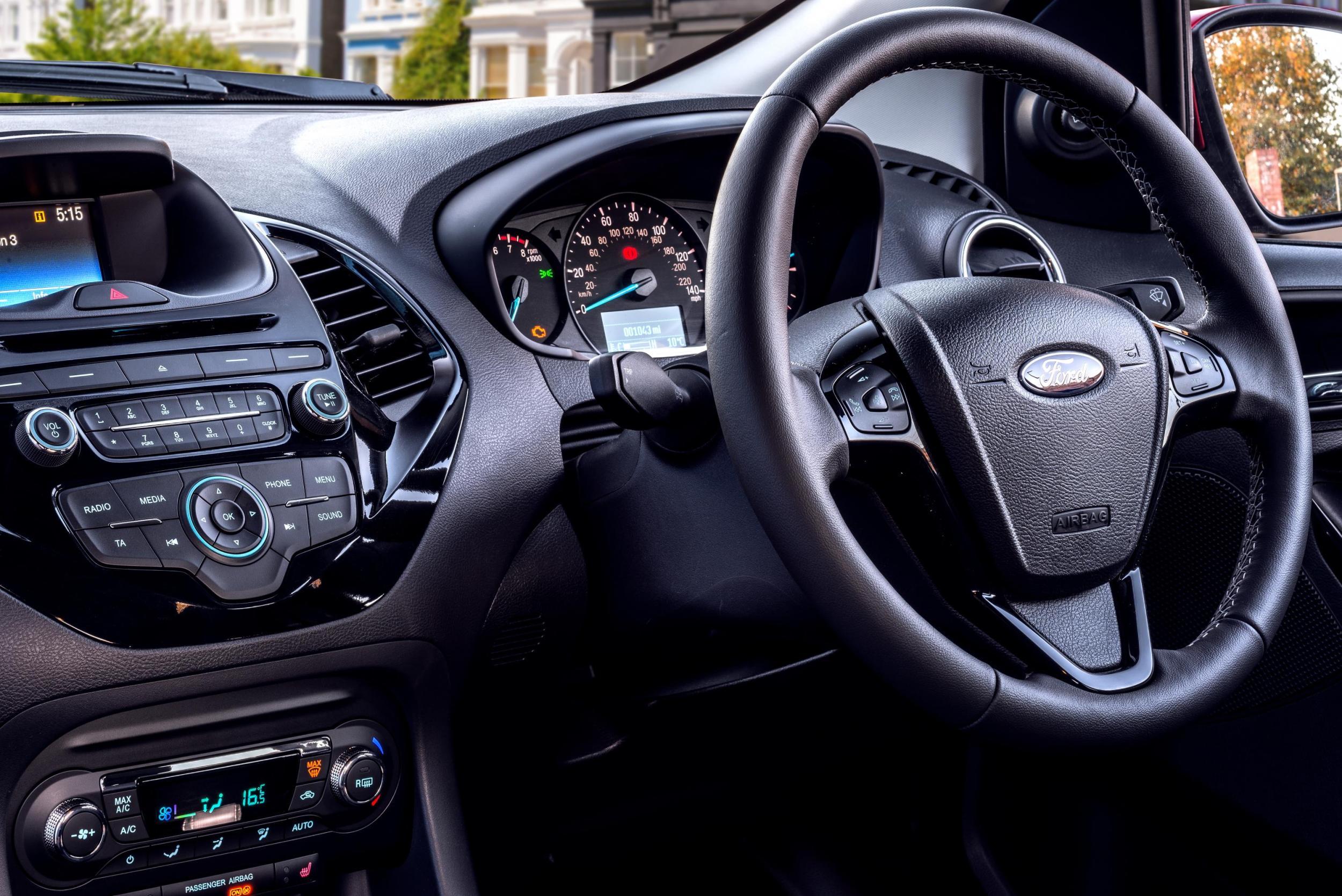
Your support helps us to tell the story
From reproductive rights to climate change to Big Tech, The Independent is on the ground when the story is developing. Whether it's investigating the financials of Elon Musk's pro-Trump PAC or producing our latest documentary, 'The A Word', which shines a light on the American women fighting for reproductive rights, we know how important it is to parse out the facts from the messaging.
At such a critical moment in US history, we need reporters on the ground. Your donation allows us to keep sending journalists to speak to both sides of the story.
The Independent is trusted by Americans across the entire political spectrum. And unlike many other quality news outlets, we choose not to lock Americans out of our reporting and analysis with paywalls. We believe quality journalism should be available to everyone, paid for by those who can afford it.
Your support makes all the difference.The biggest single fact you need to know about the Ford Ka+ is that it doesn’t have a boot handle. I mean that. It. Doesn’t. Have. A. Boot. Handle.
That doesn’t mean you can’t get into the boot, like one of those budget cars from the 1950s that did without such a luxury, because you can. There’s a button on the key fob, and another on the dash, but they just unlock it.
In order to lift the tailgate you need to slide your fingers into a tiny slit at the foot of the panel. If the car is dirty or wet, then so will your hand be. It is quite an extraordinary thing.

As usual there’s a handle on the inside of the door to pull it down and slam it shut, but it doesn’t really make up for the lack of anything to grab hold of at the back. In an age when some makes will offer you a feature where you can open the tailgate by waving your leg under the rear bumper (handy if you’re carrying stuff), it is an unforgivable omission.
Day to day it is a real chore, and, by itself disqualifies the Ka+ from contention in a highly competitive sector. There are, in brief, plenty more models to choose from, including the slightly larger and more expensive all-new Fiesta, a vastly superior machine. For economy I’d prefer a Kia Rio, Suzuki Ignis (made in India rather better), a Vauxhall Viva or a (bigger) Dacia Sandero, the cheapest new car on the market and with a better NCAP safety rating.
No doubt Ford, who once ran the ad slogan “Gives You More” will work out a way to give their drivers more of a way to get at their luggage.
The spec
Price: £12,270 (as tested; range starts at £9,545)
Engine capacity: 1.2 litre petrol; 5-sp manual
Power output (PS): 85
Top speed (mph): 105
0-62 mph (seconds): 13.3
Fuel economy (mpg): 56.5
CO2 emissions (g/km): 114
All this is a bit of a shame, as the Ka+ does have some things to commend it. It is really an “emerging markets” car, of the kind you often encounter when hiring some wheels when on holiday. I’ve nothing against these slightly old-fashioned designs because they often offer some quite fun handling, thanks to their front-wheel drive, little wheels and higher ground clearance. Some of these I’ve actually enjoyed – the Fiat Palio, for example, and the Tata Indica, which was sold for a while in the UK as the CityRover. The Dacia range represents a kind of midpoint between “proper” western designs (like the Fiesta) and the stuff that manufacturers bring in to plug a gap in their range, like the VW Fox, for example, which filled in inadequately between the Lupo and the current Up!.
So the Ka+ is in fact built by Ford India as the Ford Figo (also in saloon format), and is based on a mid-2000s Ford Fiesta design. Again that’s not bad in itself, and I appreciated the lively engine for example, and comfortable ride. Still, the drawbacks were much greater. For a start, despite that willing engine, this is actually a pretty slow car (the less powerful engine version won’t quite make it to a ton, and does the “sprint” to 60mph in 15.5 seconds). I would be concerned if I spent my own cash on one of these that the flimsy (and inconvenient) interior fuel filler release would stand up to much wear and tear; the same goes for the oddly stubby little handbrake. There’s a lot of shabby grey plastics in there and you can forget about built-in sat nav or fancy colour screens: think 1990s clock radio.

The radio controls are fiddly to use and the seats much too hard and unsupportive. All that for £12,270 in the case of my test car, which, even at such a relatively modest price, doesn’t represent such good value. Mine was a “White Edition” which had some very stylish black alloy wheels attached to it, but that was about the best I can say about the nondescript styling.
If you cast your mind back to the original Ford Ka from 1996, a distinctive bug-shaped thing, that was no paragon of build quality or high performance, but it did have some style and a kind of integrity. It, and its StreetKa convertible and SportKa derivatives, sold well during a long career. It might have been developed much better as a sub-brand, as Toyota did with Prius or Fiat with 500. But no, the old Ka was replaced by an unmemorable second-generation model – built with the same underpinnings on the same assembly lines as the Fiat 500, a runaway success.
That must hurt. To supplement the three-door Ka, Ford brought in this Ka+ as a five-door city car, but it wasn’t really worth the bother, or what little bother they went to. Usually Ford’s range is unfairly overlooked because it’s the market leader and the badge doesn’t appeal so much to snobs, even though the cars are highly competitive (especially the new Fiesta). The Ka+, by contrast, could also be said to be overlooked – but this time perfectly fairly. I look forward to the next, hopefully, improved version. With a boot handle.
Join our commenting forum
Join thought-provoking conversations, follow other Independent readers and see their replies
Comments